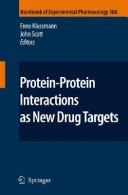| Listing 1 - 10 of 96 | << page >> |
Sort by
|
Book
ISBN: 0128143436 0128143428 9780128143438 9780128143421 Year: 2018 Publisher: London, [England] : Academic Press,
Abstract | Keywords | Export | Availability | Bookmark
 Loading...
Loading...Choose an application
- Reference Manager
- EndNote
- RefWorks (Direct export to RefWorks)
Book
ISBN: 0323992323 9780323992329 Year: 2022 Publisher: Cambridge, Massachusetts ; San Diego, California : Elsevier,
Abstract | Keywords | Export | Availability | Bookmark
 Loading...
Loading...Choose an application
- Reference Manager
- EndNote
- RefWorks (Direct export to RefWorks)
Book
ISBN: 9175193701 9789175193700 Year: 2014 Publisher: Linköping : Linköping University Electronic Press,
Abstract | Keywords | Export | Availability | Bookmark
 Loading...
Loading...Choose an application
- Reference Manager
- EndNote
- RefWorks (Direct export to RefWorks)
This dissertation by Sara Helander explores the structural biology of the c-Myc network, focusing on its regulation and interaction with other proteins. The c-Myc oncogene, often overexpressed in human cancers, is crucial for cellular growth regulation. The study delves into the disordered N-terminal domain of c-Myc, analyzing its interactions with proteins like Bin1 and Pin1 using techniques such as nuclear magnetic resonance (NMR) spectroscopy and surface plasmon resonance (SPR). These interactions are vital for the degradation of c-Myc, which, if disrupted, can lead to aggressive cell proliferation and tumorigenesis. The research provides molecular insights into the dynamics and structural properties that govern c-Myc's functionality, contributing to a broader understanding of its role in cancer. The intended audience includes researchers and professionals in molecular biology and oncology.
Oncogenes. --- Protein-protein interactions. --- Oncogenes --- Protein-protein interactions
Book
ISBN: 9789176853474 Year: 2018 Publisher: Linkopings Universitet
Abstract | Keywords | Export | Availability | Bookmark
 Loading...
Loading...Choose an application
- Reference Manager
- EndNote
- RefWorks (Direct export to RefWorks)
This work by Robert Pilstål explores protein structure, function, and modularity from an evolutionary perspective. It delves into the dynamic behaviors and interactions of proteins, particularly focusing on intrinsically disordered proteins (IDPs) that lack a defined structure yet play crucial roles in cellular functions. The study highlights the importance of understanding protein interactions to better comprehend diseases such as cancer, where dysfunctions in proteins like c-Myc are pivotal. Pilstål emphasizes the use of evolutionary data to model protein interactions, providing insights into the effects of mutations and the functional aspects of proteins beyond their structural forms. The intended audience includes researchers and students in molecular biology and biochemistry.
Protein-protein interactions. --- Proteins. --- Protein-protein interactions --- Proteins
Book
ISBN: 9789176859841 Year: 2015 Publisher: Linkopings Universitet
Abstract | Keywords | Export | Availability | Bookmark
 Loading...
Loading...Choose an application
- Reference Manager
- EndNote
- RefWorks (Direct export to RefWorks)
This dissertation by Madhanagopal focuses on the structural insights into protein-protein interactions that regulate transcription initiation and related cellular processes. The study examines the role of RNA polymerase II in eukaryotic transcription, emphasizing the formation of the Pre-Initiation Complex (PIC) and the involvement of TBP and TAF1 in this process. It also explores the ubiquitin-mediated post-translational modification of proteins, particularly through the E3 ligase TRIM21, which is significant in autoimmune pathogenesis. The work further investigates the MexR protein mutation and its implications for multidrug resistance. Using a combination of crystallography, NMR, and SAXS, this research provides a detailed molecular understanding that is crucial for structure-based drug design, targeting a scientific audience involved in molecular biology and biotechnology.

ISBN: 9783540728429 9783540728436 3540728422 3540728430 Year: 2008 Publisher: Berlin Heidelberg Springer Berlin Heidelberg
Abstract | Keywords | Export | Availability | Bookmark
 Loading...
Loading...Choose an application
- Reference Manager
- EndNote
- RefWorks (Direct export to RefWorks)
Disease-relevant intracellular protein-protein interactions occurring at defined cellular sites possess great potential as drug targets. They permit highly specific pharmacological interference with defined cellular functions. Drugs targeting such interactions are likely to act with fewer side effects than conventional medication influencing whole cell functions. This book discusses therapeutically relevant protein-protein interactions with a major focus on scaffolding proteins tethering signal transduction processes to defined cellular compartments by direct protein-protein interactions. Recent advances in the development of pharmacological agents interfering with protein-protein interactions are highlighted.
Periodical
Year: 2016 Publisher: [Place of publication not identified] : National Center for Biotechnology Information,
Abstract | Keywords | Export | Availability | Bookmark
 Loading...
Loading...Choose an application
- Reference Manager
- EndNote
- RefWorks (Direct export to RefWorks)
Periodical
Year: 2016 Publisher: [Place of publication not identified] : National Center for Biotechnology Information,
Abstract | Keywords | Export | Availability | Bookmark
 Loading...
Loading...Choose an application
- Reference Manager
- EndNote
- RefWorks (Direct export to RefWorks)
Book
ISSN: 00766879 ISBN: 9780123745965 9780123747761 9780123812681 9780123860033 0123747767 0123745969 Year: 2009 Volume: 455-466 Publisher: Amsterdam: Elsevier,
Abstract | Keywords | Export | Availability | Bookmark
 Loading...
Loading...Choose an application
- Reference Manager
- EndNote
- RefWorks (Direct export to RefWorks)
Thermodynamics. --- Protein binding. --- Protein-protein interactions.
Book
ISBN: 161122098X 9781611220988 9781617615481 161761548X Year: 2011 Publisher: New York
Abstract | Keywords | Export | Availability | Bookmark
 Loading...
Loading...Choose an application
- Reference Manager
- EndNote
- RefWorks (Direct export to RefWorks)
Protein-protein interactions. --- Protein binding --- Physiology.
| Listing 1 - 10 of 96 | << page >> |
Sort by
|

 Search
Search Feedback
Feedback About UniCat
About UniCat  Help
Help News
News